#Charles Phelps Cushing
Text
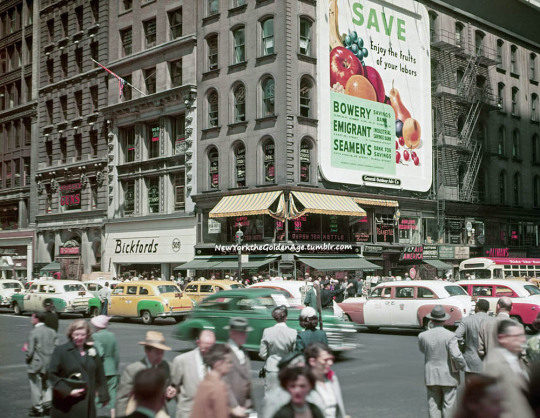
Fifth Ave. & 42nd St., 1950.
Photo: Charles Phelps Cushing via Fine Art America
#vintage new york#1950s#1950s in color#Charles Phelps Cushing#42nd St.#Fifth Ave.#color photography#pedestrians#traffic#42nd & 5th#vintage NYC#vintage Manhattan
148 notes
·
View notes
Text

Charles Phelps Cushing. New York, 1950s
#charles phelps cushing#black and white#photography#vintage#street photography#art#history#vintage photography#black and white photography#1950s#new york
296 notes
·
View notes
Photo
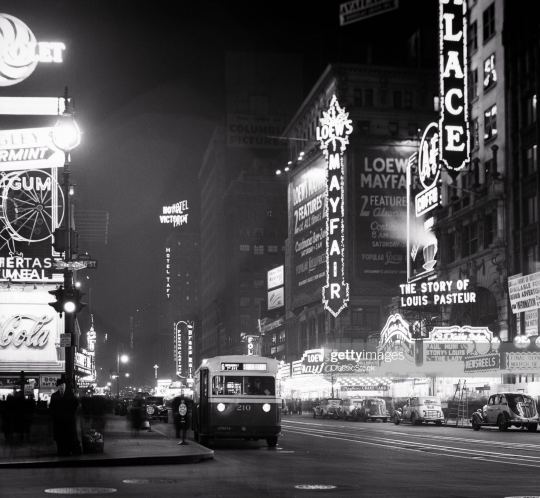
“Times Square: 46th Street night bus coming down Broadway under the bright lights of the marquees.” Photographed February 1936 by Charles Phelps Cushing.
#vintage#1930s#Manhattan#New York City#7th Avenue#Loews Mayfair Theater#The Story of Louis Pasteur#street scene
249 notes
·
View notes
Text
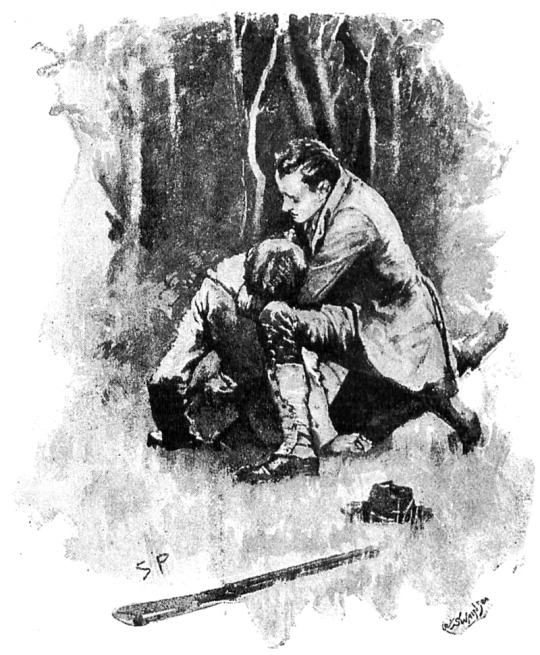

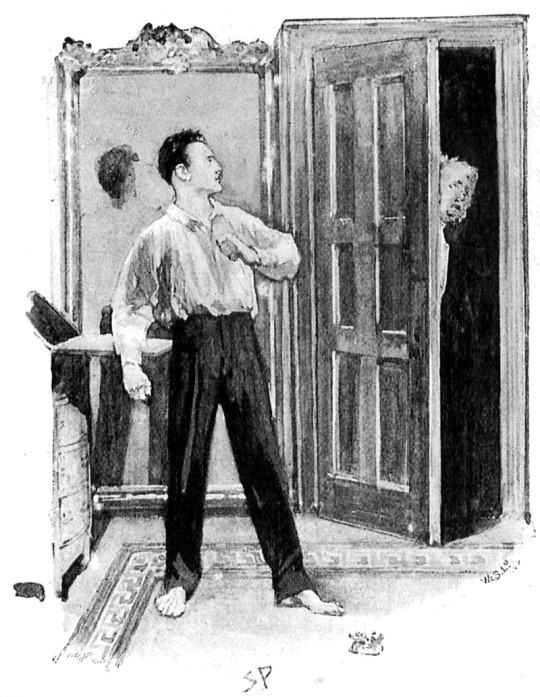

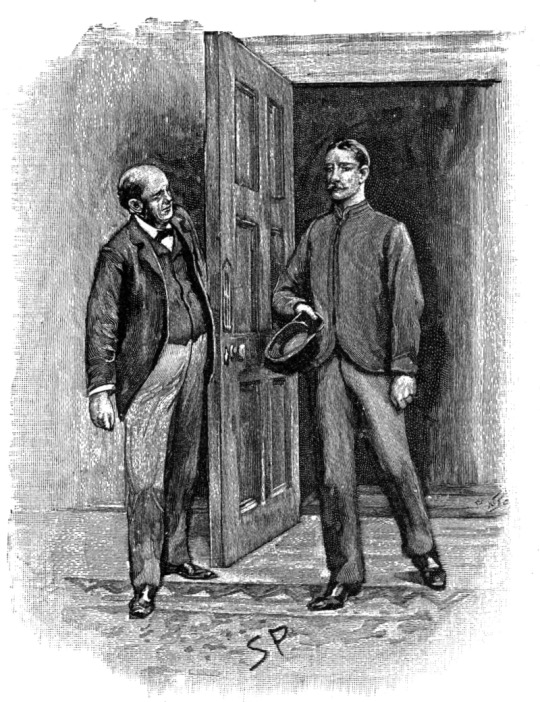
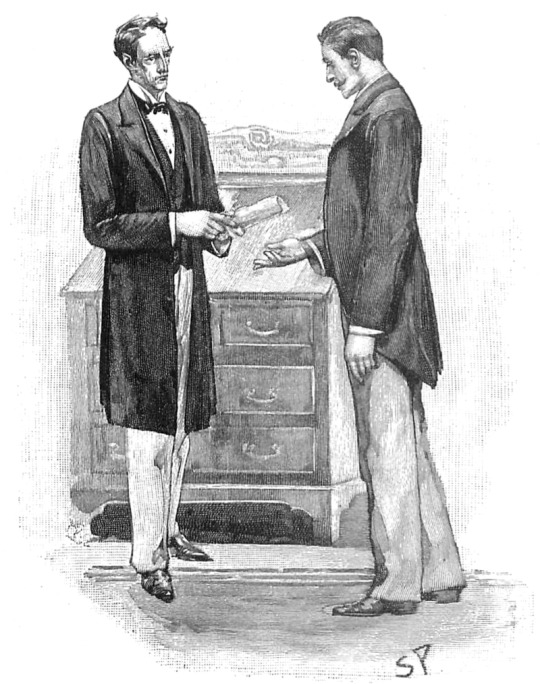



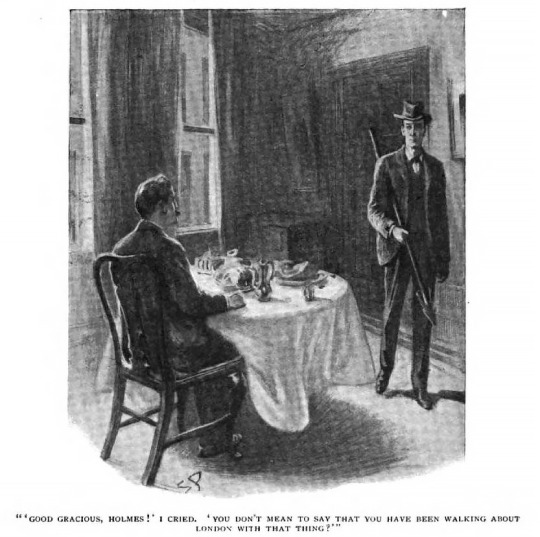
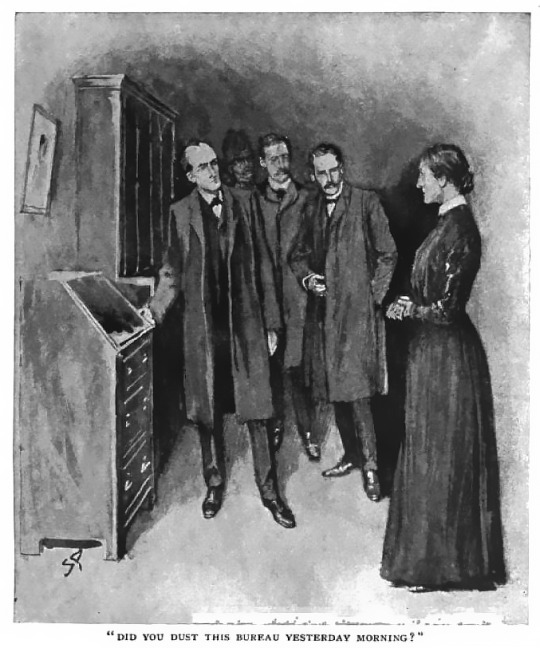
Vote for your favourite, the top 9 will proceed in the bracket. Since theyre all different shapes and sizes, make sure to click into the full views!
Paget Eliminations / Other Artist Eliminations
Full captions and details for each illustration below the cut:
All Sidney Paget illustrations are for the Strand Jul 1891 - Dec 1904
"I held him in my arms." Boscombe Valley
Characters: James and Charles McCarthy
"Have mercy!" he shrieked." Blue Carbuncle
Characters: Holmes, James Ryder, Watson
"At my cry he dropped it." Beryl Coronet
Characters: Arthur and Alexander Holder
"Thats all right my lass," said I." Cardboard Box
Characters: Mary Cushing, Jim Browner
"Inspector Forrester" Reigate Squires
Characters: Butler, Insp Forrester
"Then take the treaty." Naval Treaty
Characters: Lord Holdhurst, Percy Phelps
"You have indeed much to answer for." Hound of the Baskervilles
Characters: Dr Mortimer, Watson, Holmes
"You know that there is another man, then!" Hound of the Baskervilles
Characters: Barrymore, Watson
"The wretched young man arose." Norwood Builder
Characters: Lestrade, John Hector MacFarlane, Watson, Holmes
"God gracious, Holmes!" I cried. "You don't mean to say that you have been walking about London with that thing?" Black Peter
Characters: Watson, Holmes
"Did you dust this bureau yesterday morning?" Golden Pince-nez
Characters: Holmes, Watson, Hopkins, Susan Tarlton (Maid)
#acd holmes#sherlock holmes#tumblr bracket#sherlock holmes illustrations#elim poll#sp elim#Last one!!
16 notes
·
View notes
Text

© Charles Phelps Cushing/ClassicStock/Getty Images
Havasupai women in the Grand Canyon
This photo predates the founding of Grand Canyon National Park by 20 years. The Havasupai people are thought to have lived in the Grand Canyon for some 800 years, and the park's founding in 1919 meant the tribe lost many acres of land. Here a group of Havasupai women are seen weaving baskets in 1899. Indigenous people still live in the Havasupai Indian Reservation today: just outside the boundary of Grand Canyon National Park, it's known for its incredible waterfalls.
3 notes
·
View notes
Text
One of Frank Lloyd Wright’s Final Projects, Modeled After His Guggenheim Design, Sells for $6 Million
The Architect Briefly Stayed in the Connecticut Home While Overseeing the Construction of the Museum.
— By Lee Carter | January 26, 2024 | News.ArtNet.Com

Tirranna, located in New Canaan, Connecticut, designed by Frank Lloyd Wright. Photo: Udor Photography.
A Frank Lloyd Wright-designed home in the town of New Canaan, Connecticut, has sold for $6 million—25 percent below its asking price—to an undisclosed buyer. Called Tirranna, the 7,000-square-foot estate, built in 1955, is one of the famed architect’s largest residential projects, and one of his last.
Most recently selling for $4.8 million in 2018, Tirranna is among the higher-priced Frank Lloyd Wright properties on record, as well as one of the most expensive properties sold in New Canaan in the last year. It is one of a handful of Wright properties to enter the market recently, which also includes the Mrs. Clinton Walker House in California, his only oceanfront home.

Interior view of Tirranna, featuring Philippine mahogany paneling and Cherokee-red flooring. Photo: Udor Photography. Courtesy of Coldwell Banker Global Luxury.
Tirranna was listed by Coldwell Banker Global Luxury’s Albert Safdie and Marsha Charles, who closed on the property January 22. “It was a rare honor to represent Tirranna,” they said, “a true gem of mid-century architectural history that will continue to provide a Zen-like experience blending nature and comfort to its latest inhabitants.”
Though small in size, the idyllic town of New Canaan became a hotbed of architectural experimentation in the 20th century. It’s estimated that, between 1948 and 1973, upwards of 100 Modernist homes were built in the area by architectural greats who included Marcel Breuer (creator of the Whitney Museum of American Art on the Upper East Side), John M. Johansen, and Eliot Noyes. They were part of the Harvard Five, a group of architects who settled in New Canaan in the 1940s after graduating from the university’s design department. Philip Johnson’s famed Glass House, too, calls New Canaan home. Like Wright, they all emphasized simplicity, functionality, and honesty of materials.
Tirranna gets its name from an Australian Aboriginal word meaning “running waters,” referring to a nearby stream and recalling the architect’s most iconic residential project, Fallingwater in Pennsylvania. The classic Usonian abode features seven bedrooms, eight and a half bathrooms, and a wine cellar converted from a bomb shelter. Tirranna’s interior features Philippine mahogany paneling, Cherokee-red Colorundum concrete flooring, and a clerestory for an abundance of natural light. The architect also provided large windows that look out onto nature. In 1958, an observatory was added above the master bedroom.

Exterior curved patio and circular pool. Photo: Udor Photography. Courtesy of Coldwell Banker Global Luxury.
The land immediately surrounding the home was transformed into gardens by horticulturist Frank Okamura and landscape architect Charles Middeleer. Okamura is credited with reviving the bonsai tradition in America through his decades-long work at the Brooklyn Botanic Garden and his book The Art of Bonsai. A greenhouse, circular pool, tennis court, barn, playhouse, and a one-room guesthouse can also be found on the grounds.
Wright himself briefly stayed in the home while overseeing the construction of the Solomon R. Guggenheim Museum some 40 miles away in Manhattan. With its semicircular style, Tirranna mirrors the spiral concrete ramp that makes the Guggenheim one of the most recognizable pieces of architecture in the city. The greenhouse of Tirranna was even built using scalloped-glass windows left over from the Guggenheim project.
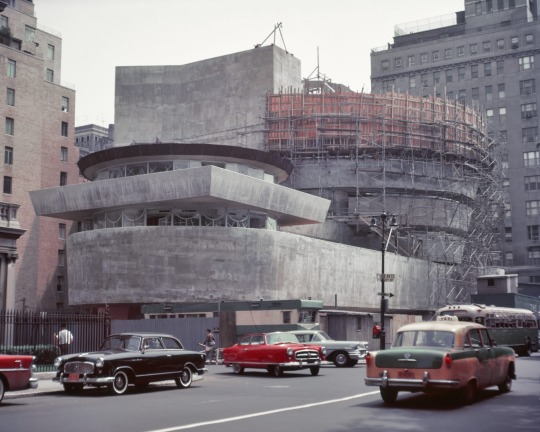
The Solomon R. Guggenheim Museum, New York (Manhattan, New York City), New York, Under Construction (ca. 1950s). Photo: Charles Phelps Cushing/ClassicStock/Getty Images

The circular windows used in Tirranna’s greenhouse were left over from the Guggenheim project. Photo: Udor Photography. Courtesy of Coldwell Banker Global Luxury.
#Art World 🗺️#Market#Buy & Sell#Guggenheim Design#The Solomon R. Guggenheim Museum | New York | Manhattan New York City | New York#Lee Carter
1 note
·
View note
Photo

Charles Phelps Cushing, Night Scene Of Chicago Movie Theater, 1930s
192 notes
·
View notes
Text
Ok no, listen to this
We all know about the whole 7% solution thing in the Holmes books, right? No one missed that. (BBC Sherlock fans, no this is not about Sherlock. This is Holmes.)
And he states that he only uses it as a stimulant when he is out of work. Ok. But you can’t just give up on addiction that fast, even if your name is Sherlock Holmes. So how did he do it?
I have a theory: the man was on crack half the time.
I love the Holmes books, I’ve read them all at least a dozen times. And you can’t tell me they don’t read like a tumblr post 75% of the time. Or like an interaction between Will and Jem from The Infernal Devices. I mean in modern language, they would go something like this:
A Scandal in Bohemia
Watson: How are you going to find the photograph?
Holmes: Idk, probably set the house on fire
The Red Headed-League
Holmes: Hey, Watson, got a gun?
Watson: Yeah, you asked me to.
Holmes: Good.
Watson: You don’t? What did you bring with you?
Holmes: A whip.
The Speckled Band
Watson: So... there’s a leopard
Holmes: Yes.
Watson: What do we do then?
Holmes: Pray to God and run.
The Cardboard Box
Susan Cushing: That box has severed ears in it!
Holmes: Yeah, but look at that salt though.
The Naval Treaty
Percy Phelps: This is a very important letter, I can’t lose it, there will be a war if it gets out, I got brain fever and almost died when it was stolen-
Holmes: Sorry, I couldn’t find it.
Percy:...
Holmes: April Fools!!!
The Final Problem:
Moriarty: *threatens Holmes*
Moriarty: *follows him to Reichenbach to kill him*
Holmes: Cool, can I write a letter?
The Empty House
Holmes: I died... not really.
Holmes: Time to scare the shit out of Mrs. Hudson, I miss her.
Watson: I thought you were dead!
Holmes: It appears that the rumours of my death have been greatly exaggerated... by you.
The Priory School
Holmes: I sold my principles for 6000 pounds.
Watson: Whhaaatt??
Holmes: He’s just a rich white man, how much can it hurt?
Black Peter
Holmes: *enters with a harpoon*
Watson: Where the hell have you been roaming with that thing?
Holmes: I was trying to stab a pig.
Watson:...
Holmes: It’s not as easy as it sounds.
Charles Augustus Milverton
Watson: Okay, we’re supposed to steal this letter.
Holmes: Yup.
Watson: Except there’s this woman in front of the man we’re supposed to be stealing from, and she’s rambling about how he ruined her life.
Holmes: Yup.
Watson: Holmes, what do we do? Should we leave?
Holmes: No, let’s wait, I’m kinda curious how this is going to turn out.
.
.
.
Lestrade: Holmes, I need your help with this murder-
Holmes: Sounds like Watson did it.
Watson: 😶😶
The Second Stain
Lestrade: Look! The stain on the carpet doesn’t match the stain on the floor! Can you explain that, huh?
Holmes:...
Holmes: Bitch, someone rotated it.
The Bruce-Partington Plans
Holmes: Oh my God. Oh my God. Oh my God. Call 911!
Watson: Holmes? Everything all right? Did something bad happen?
Holmes: No, nothing bad happened.
Watson: Then what-
Holmes: My brother is coming here.
Watson: But what-
Holmes: MY BROTHER IS COMING HERE
The Dying Detective
Holmes: I was dying.
Holmes: And now I’m not.
Watson:..
Watson: I feel like murdering you myself right now, not gonna lie.
The Devil’s Foot
Holmes: I think this is a deadly poison.
Holmes: Let’s both of us try it.
His Las Bow
Watson: I thought you retired.
Holmes: I did. But the level of jackassery here pulled me out of it.
Watson: Well, that’s true, there’s a war...
Holmes: I leave for 5 minutes and it all goes to shit.
Three Garridebs
Watson: Holmes, don’t hurt him!
Holmes: But he shot you!
Watson: Yeah, but-
Holmes: He shot you!
The Illustrious Client
Watson: Holmes, I heard you almost died!
Holmes: Nah, I’m fine. What do you know about pottery?
Watson: What?
Holmes: Pottery, Watson. Specifically, Chinese Pottery. I want you to research on it.
The Blanched Soldier
Holmes: I want to write a story.
Holmes: And I don’t know how.
Holmes: *writes the story*
Holmes: This is a pile of horseshit. I miss Watson.

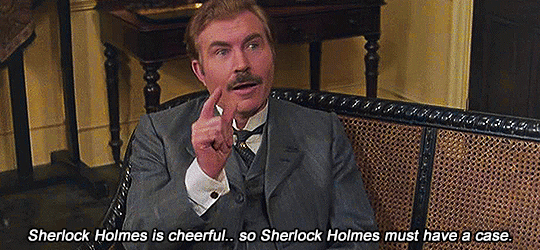
I’d write about the long stories too, but my fingers are hurting now.
#sherlock holmes#NOT SHERLOCK#that thing is a blasphemy#we stan only jeremy brett as Holmes in this house#john watson#the adventures of sherlock holmes#the memoirs of sherlock holmes#the return of sherlock holmes#the casebook of sherlock holmes#the last bow#im bad at tagging#drugs mention#granada sherlock holmes#sir arthur conan doyle#conan doyle
354 notes
·
View notes
Photo

Charles Phelps Cushing. Fifth Avenue Looking North from 42nd Street. Manhattan. 1940s.
315 notes
·
View notes
Text
A horse and wagon in front of an old building, once the home of President James Monroe but by then a junk business on Crosby Street.
Manhattan, 1920's
PHOTO: Charles Phelps Cushing

#new york city#street photography#new york#nostalgia#street style#manhattan#newyork#film#35mm film#nyc street photography#newyorkcity#vintage new york#old new york#nyc streets#nyc street style#nyc#blackandwithephotography#35mm black and white#black and white photography#black and white#b&w photography#horse and carriage#street photographer#1920s style#1920's#lower manhattan#vintage style#vintage#nostalgic#35mm photography
15 notes
·
View notes
Photo

Working on the Solomon R Guggenheim Museum, NYC - photo by Charles Phelps Cushing #NYC #newyork #Newyorkcity #photo #photos #museum #museums #guggenheim #fifthavenue #5thavenue #manhattan https://www.instagram.com/p/CWl-jKqsT5d/?utm_medium=tumblr
25 notes
·
View notes
Text
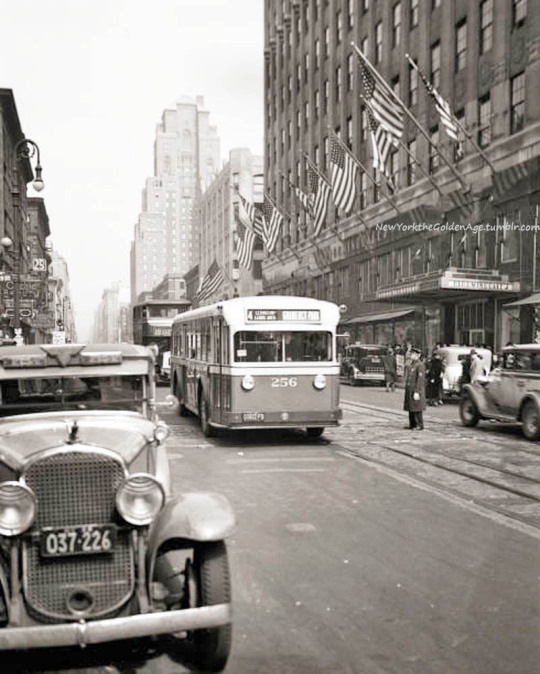
A view of Lexington Avenue and 59th street in front of Bloomingdales, looking uptown, 1930s.
Photo: Charles Phelps Cushing via Classic Stock/Getty Images
#New York#New York City#1930s#Charles Phelps Cushing#vintage NY#Lexington Ave.#Bloomingdale's#vintage cars#vintage transport#vintage bus
89 notes
·
View notes
Text

Charles Phelps Cushing. Times Square 46Th Street, New York. 1930s
#charles phelps cushing#vintage#photography#black and white#street photography#art#history#vintage photography#black and white photography#1930s
1K notes
·
View notes
Photo
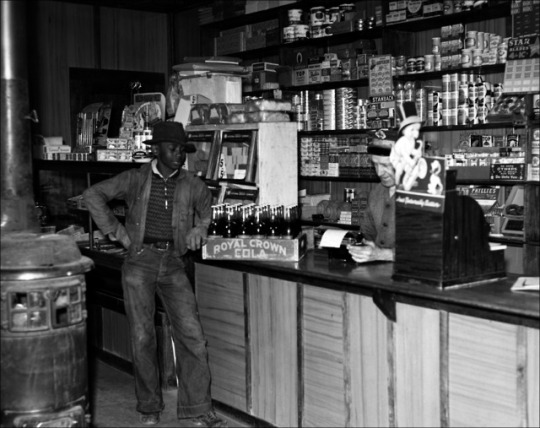
Happy birthday to Claud Adkins Hatcher, inventor of Royal Crown Cola, who was born on this day in 1876. Hatcher had begun his life as a pharmacist and operator of two drug stores in Terrell County, Georgia. But in 1901, he left that profession to join his father’s wholesale grocery business, the Hatcher Grocery Company. Following a dispute with a local Coca-Cola salesman over wholesale pricing, Hatcher launched his own soft drink line in 1905, starting with a ginger-ale.
By the time of his death on December 31, 1933, the company was manufacturing a wide range of carbonated beverages, including the popular Nehi line, in hundreds of factories and bottling plants. These sites were located mostly in the American South, where the soft drink was most popular and where, when paired with a Moon Pie, was known as a “working man’s lunch”.
This ca. 1930s photograph shows a case of Hatcher’s invention on the counter of an unidentified Southern country store. It was taken by Charles Phelps Cushing (1884-1973), a photographer and writer best known for documenting Americana and small town American community life.
The photograph is part of the Hagley Library’s Chamber of Commerce of the United States photographs and audiovisual materials, Series II. Nation’s Business photographs (Accession 1993.230.II) collection. To view more materials from this collection online, click here to visit its page in our Digital Archive.
#otd#on this day#born on this day#august 20#claud a hatcher#claud adkins hatcher#royal crown cola#rc cola#soda#soft drinks#pop#food history#food culture#georgia#georgia history#1930s#moon pie#americana#small town life#working man's lunch#country store
19 notes
·
View notes
Photo

The night falls on Chicago Movie Theater, 1931. Photographed by Charles Phelps Cushing.
1 note
·
View note
Photo
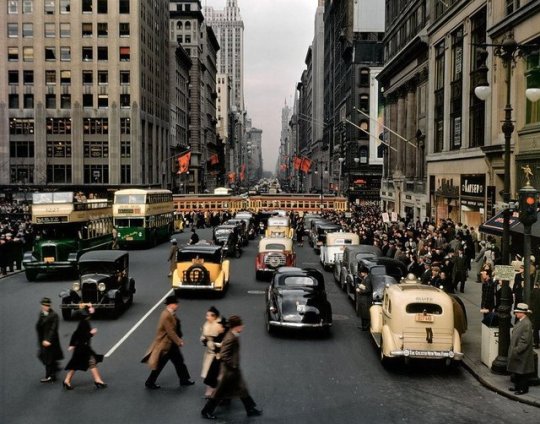
Fifth Avenue Looking North from 42nd Street. Manhattan. 1940s, photo by Charles Phelps Cushing.
24 notes
·
View notes